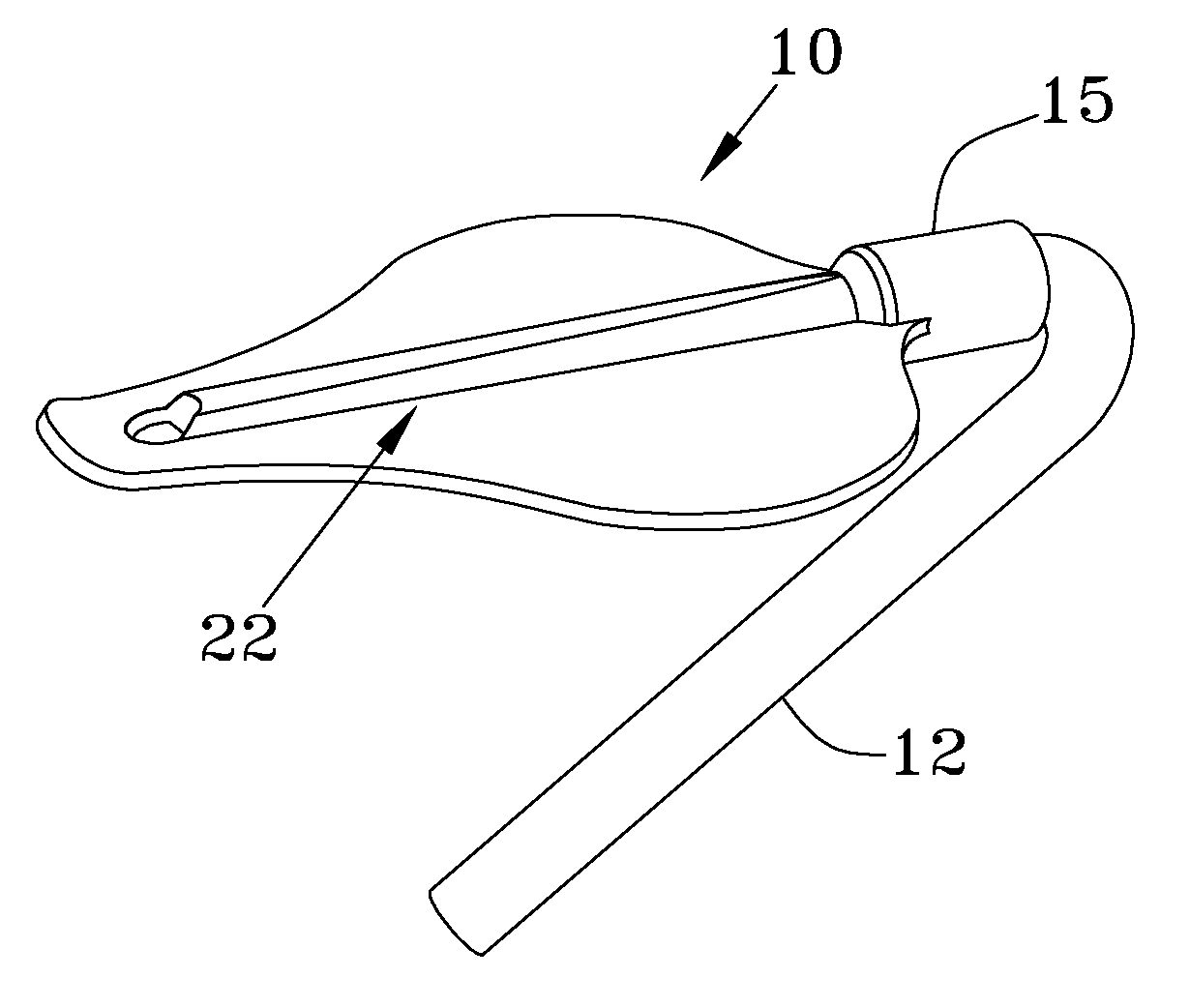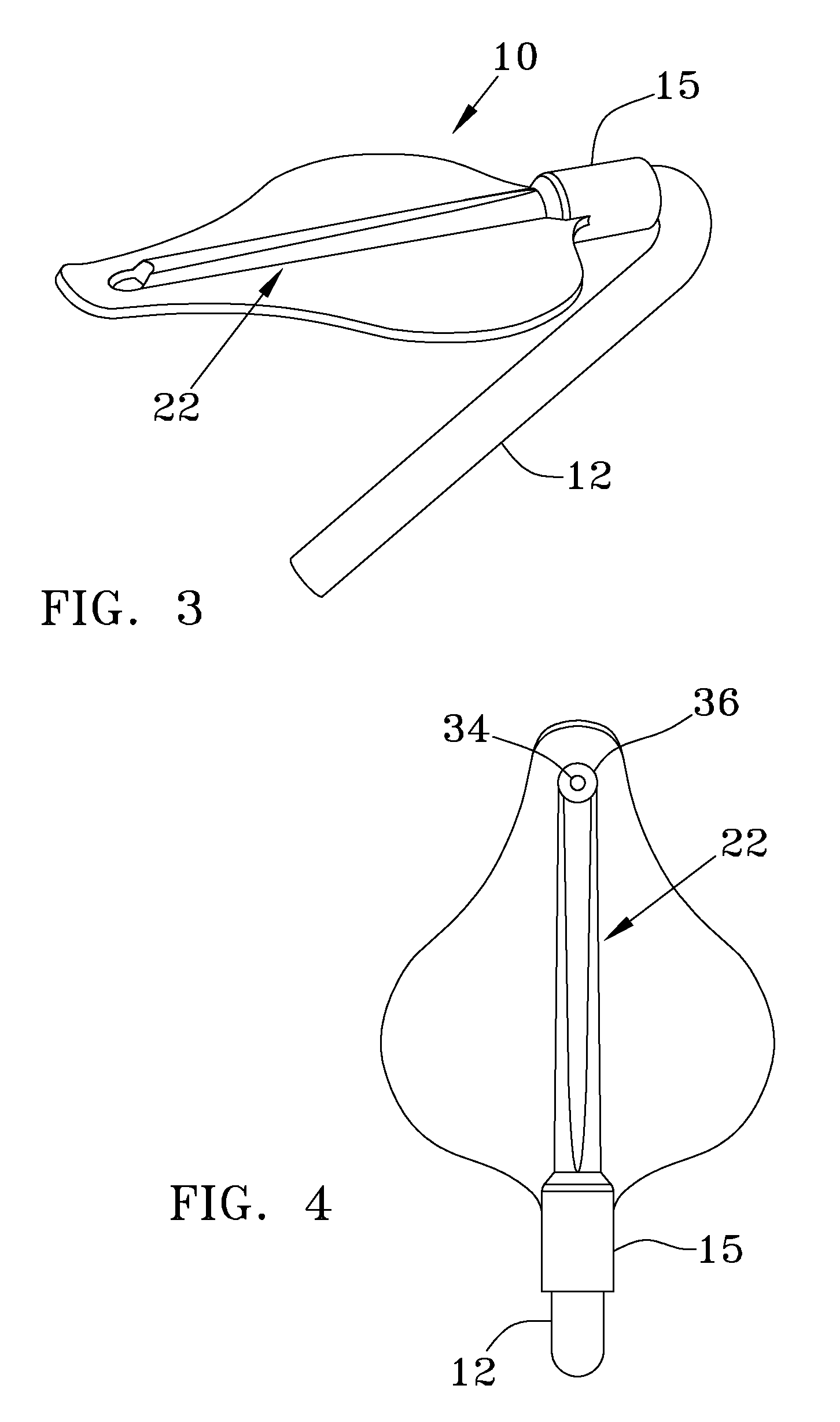Oral cavity suction device
a suction device and oral cavity technology, applied in the direction of saliva removers, etc., can solve the problems of uncomfortable sensation for patients and useless ejectors, and achieve the effects of reducing discomfort for patients, gentle suction force, and reducing gag reflexes
- Summary
- Abstract
- Description
- Claims
- Application Information
AI Technical Summary
Benefits of technology
Problems solved by technology
Method used
Image
Examples
Embodiment Construction
[0016]Referring to FIG. 1-7, saliva ejector 10 of the present invention is shown. Discharge tube 12 is made of any suitable food grade or medical polymer for medical devices or stainless steel. Tube 12 is hollow, has a proximate end 14, a distal end 16, and is generally cane-shaped, in that the included angle at proximate end 14 is acute, forming an approximate 32° angle (see FIGS. 12-13). Discharge tube 12 can be reusable or disposable. It is through discharge tube 12 that saliva ejector 10 is connected to a slow-speed suction device (well known in the art and not shown), and through which saliva, water, and other debris are removed from the mouth of a patient.
[0017]Discharge tube 12 is removeably engaged via friction fit connection sleeve 15 located at the high-end 18 of saliva ejector 10. Turning to FIG. 7 it can be seen that there is a gradual uniform taper along saliva ejection tube 22 between high-end / back end 18 and a low-end / front end 20. Saliva ejection tube 22 extends alon...
PUM
 Login to View More
Login to View More Abstract
Description
Claims
Application Information
 Login to View More
Login to View More - R&D
- Intellectual Property
- Life Sciences
- Materials
- Tech Scout
- Unparalleled Data Quality
- Higher Quality Content
- 60% Fewer Hallucinations
Browse by: Latest US Patents, China's latest patents, Technical Efficacy Thesaurus, Application Domain, Technology Topic, Popular Technical Reports.
© 2025 PatSnap. All rights reserved.Legal|Privacy policy|Modern Slavery Act Transparency Statement|Sitemap|About US| Contact US: help@patsnap.com



